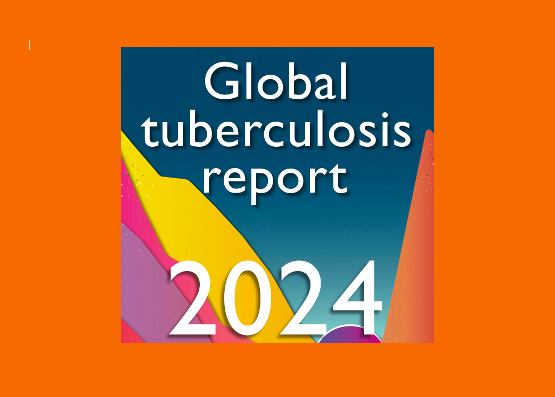Global Tuberculosis Report 2024 (GS Paper 2, Health)

Why is it Important?
- The World Health Organization's Global Tuberculosis Report 2024 has highlighted significant trends in the fight against tuberculosis (TB), a disease that continues to affect millions worldwide.
- The report reveals a notable 17.7% reduction in TB incidence in India from 2015 to 2023, surpassing the global average decline of 8.3%.
- This achievement underscores India’s strong commitment to meeting its ambitious goal of eliminating TB by 2025, under the National Tuberculosis Elimination Programme (NTEP).
Key Global Findings from the WHO Report 2024
- Global TB Incidence: In 2023, the world saw 8.2 million new TB cases, an increase from 7.5 million in 2022. This is the highest figure since 1995.
- TB Mortality: An estimated 1.25 million people died from TB in 2023, a slight decrease from 1.32 million in the previous year.
- TB Burden in Low- and Middle-Income Countries (LMICs): Around 87% of the global TB burden is concentrated in 30 LMICs, with India, Indonesia, China, the Philippines, and Pakistan accounting for more than half of global cases.
- Demographics: TB cases are predominantly in men (55%), followed by women (33%) and children and adolescents (12%).
India's Progress and Challenges
India, which bears approximately 27% of the global TB burden, has made considerable strides in tackling the disease:
- Declining Incidence: India has reduced its TB incidence from 237 cases per lakh population in 2015 to 195 per lakh in 2023, a decline of 17.7%.
- Treatment Expansion: The treatment coverage increased to 89% in 2023, up from 72% in 2015, reflecting improved diagnosis and access to care.
- Estimated TB Cases in India: In 2023, India reported around 27 lakh TB cases, with more than 25 lakh people receiving treatment.
Despite these advancements, India faces challenges in meeting global targets:
- WHO Targets: The WHO's "End TB Strategy" aims for a 75% reduction in TB deaths and a 50% reduction in TB incidence by 2025. However, both global and India-specific reports indicate that India may fall short of these milestones.
The Nature of Tuberculosis
TB is caused by the bacterium Mycobacterium tuberculosis, most commonly affecting the lungs. It spreads through the air when an infected person coughs, sneezes, or spits. Symptoms include chronic cough, chest pain, fever, weight loss, and night sweats. TB is treatable with a six-month regimen of antibiotics, though the emergence of drug-resistant strains complicates treatment.
- Drug-Resistant TB: India carries a significant share of the global burden of drug-resistant TB, including multidrug-resistant TB (MDR-TB) and extensively drug-resistant TB (XDR-TB), which pose severe treatment challenges.
India's Commitment to TB Elimination
India has set a national goal to eliminate TB by 2025, five years ahead of the global target of 2030, as part of its commitment to Sustainable Development Goal (SDG) 3.3. India’s targets include:
- A 90% reduction in TB-related mortality from 2015 levels.
- An 80% reduction in TB incidence.
- The elimination of catastrophic health costs for families affected by TB.
This commitment was reiterated at key forums, such as the "One World TB Summit" in 2023 and the Gandhinagar Declaration, which emphasizes regional cooperation among South-East Asia countries to combat TB.
Challenges in TB Elimination
Despite significant efforts, several challenges hinder the progress toward TB elimination:
- Insufficient Global Funding: In 2023, the global funding available for TB programs in LMICs was only USD 5.7 billion, far below the target of USD 22 billion needed by 2027.
- Catastrophic Costs: A large number of Indian households with TB face severe financial hardship. Nearly 20% of affected families in India experience catastrophic health expenditures, which exceeds the WHO's target of zero.
- Research Gaps: Global TB research funding remains underwhelming, with only 20% of the required research target being met. This hampers advancements in TB diagnostics, treatment, and vaccine development.
- Epidemic Drivers: TB is exacerbated by social determinants like undernutrition, diabetes, HIV, alcohol use, and smoking, making comprehensive healthcare and prevention measures essential.
India’s Key Initiatives to Fight TB
To address these challenges, India has rolled out several initiatives under its National Tuberculosis Elimination Programme (NTEP):
- Pradhan Mantri TB Mukt Bharat Abhiyan (PMTBMBA): This initiative focuses on the active identification and treatment of TB cases, as well as community engagement to reduce stigma.
- Nikshay Poshan Yojana: This scheme provides nutritional support to TB patients to help them recover and manage their treatment better.
- National Strategic Plan (NSP) for Tuberculosis Elimination (2017–2025): The NSP outlines specific actions for TB diagnosis, treatment, and prevention.
- TB Harega Desh Jeetega Campaign: A national campaign aimed at increasing awareness about TB, mobilizing communities, and encouraging participation in TB eradication efforts.
The Path Ahead: Future Strategies for TB Elimination
To further accelerate progress, the following strategies must be prioritized:
- Expanding Preventive Treatment: Tuberculosis Preventive Therapy (TPT) should be scaled up, focusing on shorter, more accessible treatment regimens.
- Innovative Diagnostics: Enhanced molecular testing technologies should be adopted to facilitate early TB diagnosis and improve treatment outcomes.
- Decentralization of Services: By decentralizing TB services, especially through initiatives like "Ayushman Arogya Mandirs," healthcare access in remote areas can be improved.
- Community Involvement: Strengthening patient support networks and encouraging community participation will be crucial in overcoming stigma and improving TB care.
- Exploring Adult BCG Vaccination: Further studies should assess the potential benefits of Bacillus Calmette-Guérin (BCG) vaccination in adults to prevent TB.
Conclusion
- The Global Tuberculosis Report 2024 reveals a mixed picture of progress and challenges.
- India’s efforts to reduce TB incidence and expand treatment coverage are commendable, yet the country faces significant hurdles in eliminating the disease by 2025.
- Adequate funding, improved healthcare infrastructure, and community engagement are crucial to reaching the ambitious goal of TB elimination.
- With sustained efforts and global cooperation, TB can be defeated, and India can lead the way in this global fight.


